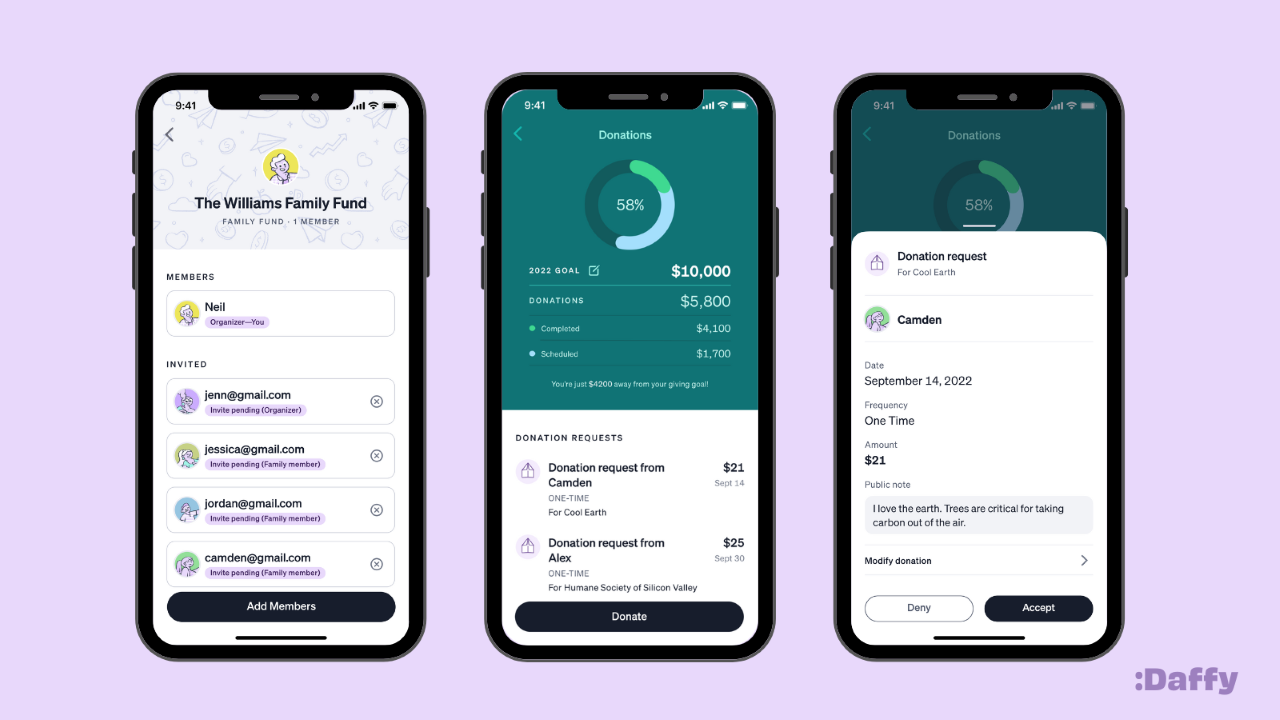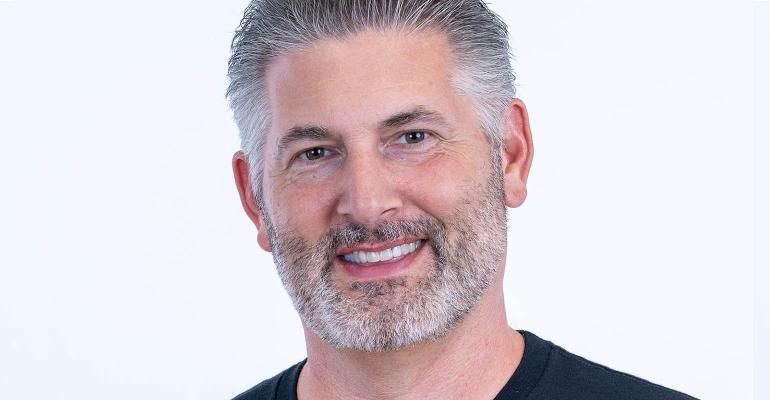Adam Nash’s charitable giving platform Daffy.org announced Tuesday the launch of its new “Daffy for Families” functionality.
Shorthand for Donor-Advised Fund for You, Daffy is a not-for-profit community built around a mobile platform intended to ease the process of giving using DAFs.
Previously only available to those contributing to the fund, Daffy for Families allows existing members to invite their children and grandchildren to join them on the platform or for new members to create and fund their own DAF, then invite family to join the platform.
Once invited, additional family members can create their own profiles, follow charities they care about and request donations. It’s important to note that only the organizing member of the fund is responsible for actual monetary contributions, and for taking the Daffy Pledge to contribute a certain minimum amount monthly; the invited family members only are involved on the donation side. Daffy for Families charges a $5 monthly flat rate, regardless of the number of family members added.
Daffy for Families is designed to help families of all types give together more easily, so it allows up to 24 family members (including two organizers) under one fund. The term “family” here is non-restrictive and invites can go out, via email or SMS, to whomever the organizer chooses (regardless of blood relation or any other factor). Anyone aged 13 and older can have their own secure account and password. From there, each family member can request donations to specific organizations to be approved by the organizers of the family fund and receive notifications whenever anyone in the family makes a new donation.
According to CEO and co-founder Adam Nash, “There are many types of families these days, so we didn’t want there to be any limitations.”
As for the number 24, Nash admits that it's a bit arbitrary (and based roughly on the size of his own extended family) but explained the intention is to make a point of being meaningfully bigger than traditional tech product family plans, which normally impose a 4 or 5 user limit (think shared Netflix subscriptions). Those limitations are driven largely by monetization, which Nash claims is not Daffy’s main concern right now. Instead, he wants to focus on the ability for families to get as many members involved in giving as easily and transparently as possible.

“Current DAFs don’t do enough to actually help people give the money in the funds away.” Nash said.
According to Nash, Daffy for Families takes inspiration from the tech products people use every day, like the Apple store, Amazon or Microsoft Teams to try and offer an experience with which users and their children are already vaguely familiar. “We have designed Daffy for Families with this simple concept in mind," he said. "Just as Apple made it simple to share apps, movies and music with your family, Daffy is making it that simple to share the importance of giving.”
Making all donations and recommendations visible to all family members on the platform is a deliberate and important choice. Each entry has the potential to act as a conversation piece or teachable moment, whether it be explaining to a child why the family makes consistent donations year after year to certain causes or to give the child an opportunity to demonstrate the causes they care about to the rest of the family via their own personal recommendations. These may seem like simple concepts to highlight, but any advisor will tell you, such intergenerational conversations can be deceptively difficult to start.
“As any parent knows, when it comes to teaching values to your children, actions speak louder than words. It is one thing to tell your family how important giving is to you, but it is quite another thing for them to see you give,” Nash said. “There’s a big difference between telling your kids they need to read more and them actually seeing you read.”

